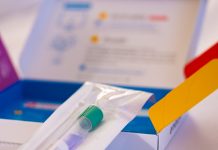New research has found a testing marker which may help with the earlier diagnosis of autism. It’s based on differences in the visual cortex of the brain of a person with autism. During a brain process called binocular rivalry, the visual cortex processes one image at a time while seeing multiple images at once. Autistic brains, unlike the brains of those without autism, cannot filer out all the extra images and just process the one image at once.
To measure how well the brain performs binocular rivalry, the study’s participants were shown images of checkerboard patterns. The patterns were different colors and were different between their left and right eyes. The participants were measured while being connected through electrodes which monitored the signals being sent through the visual cortex.
Autistic participants demonstrated a diminished ability to switch their focus between the two images, unlike the non-autistic participants in the study. Researchers determined that they could measure and diagnose autism based on this visual test accurately up to 87%.
The scientific community is really excited about these findings because the researchers were also able to determine how severe the symptoms of autism were based on the measurements of the participants’ binocular rivalry. It’s a big step forward in the diagnosis of autism, and the test can be administered in young children who are not talking yet, or in adults who have speech complications or are non-verbal.
References
Spiegel, Alina, et al. “Slower Binocular Rivalry in the Autistic Brain.” Current Biology, vol. 29, no. 17, 9 Sept. 2019, pp. 2948–2953., doi:https://doi.org/10.1016/j.cub.2019.07.026.



































